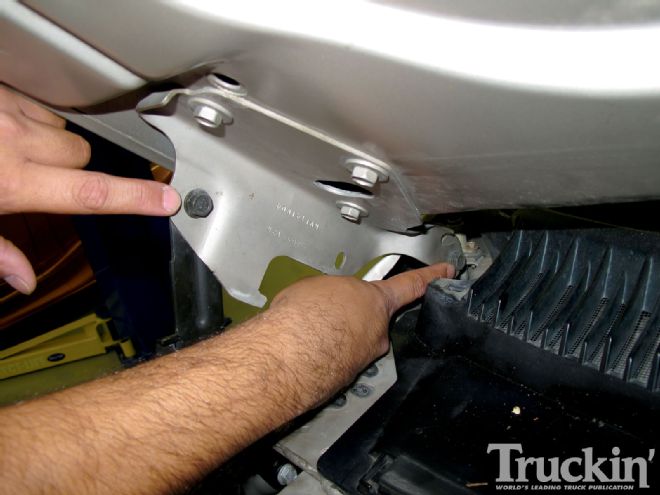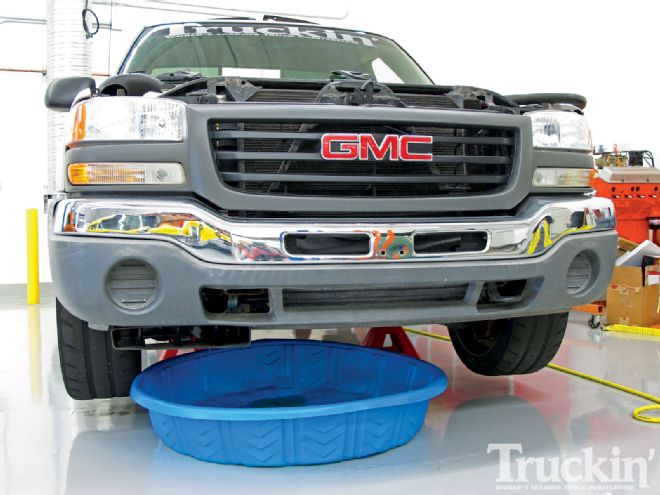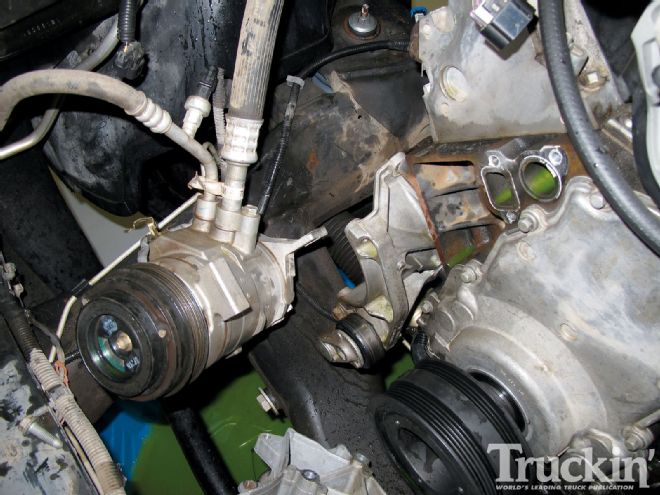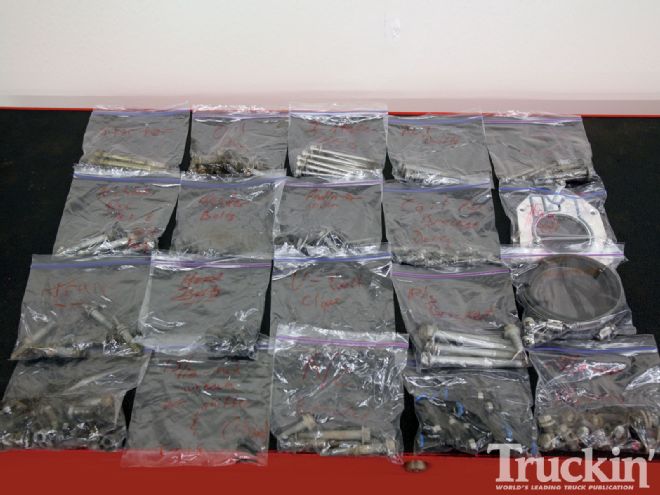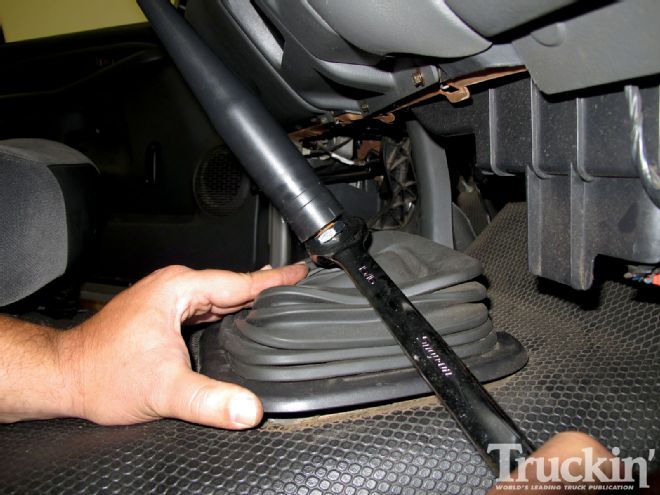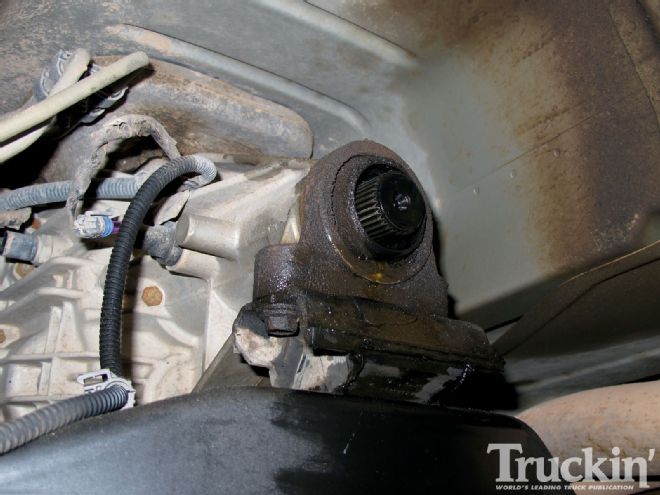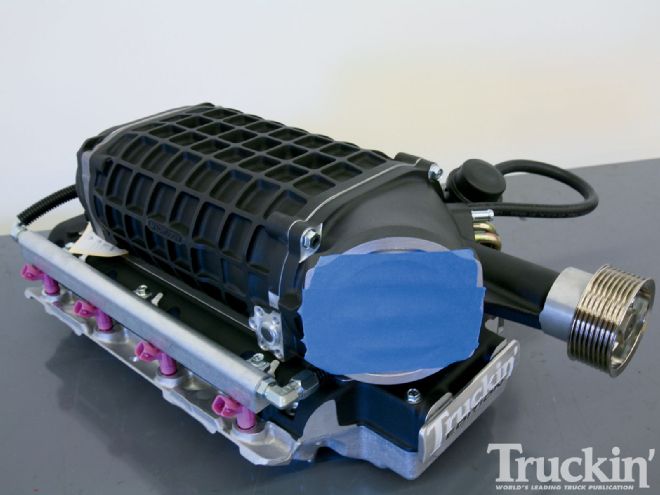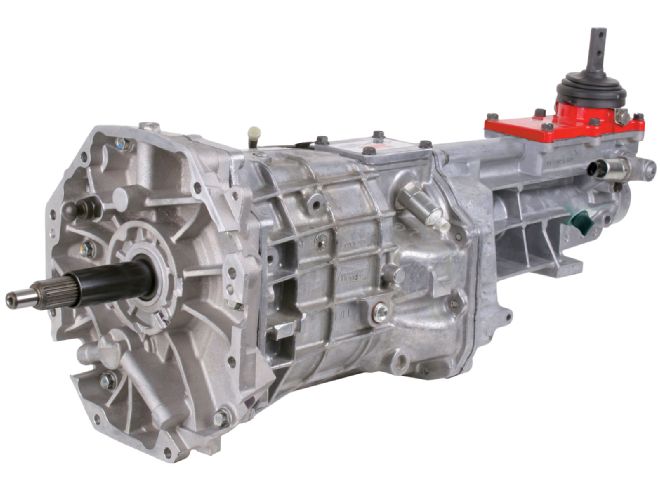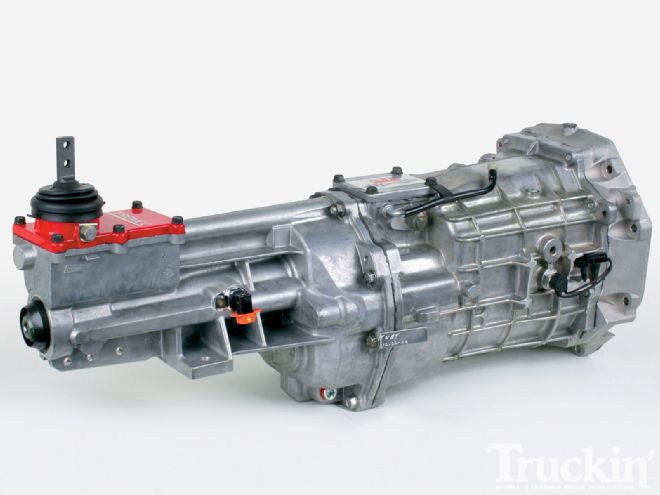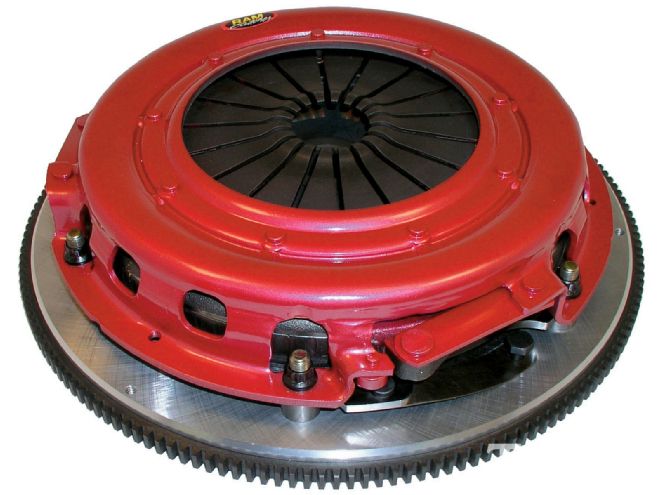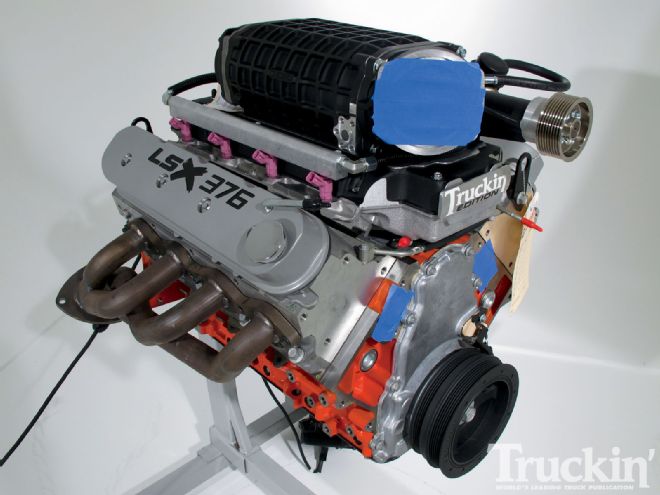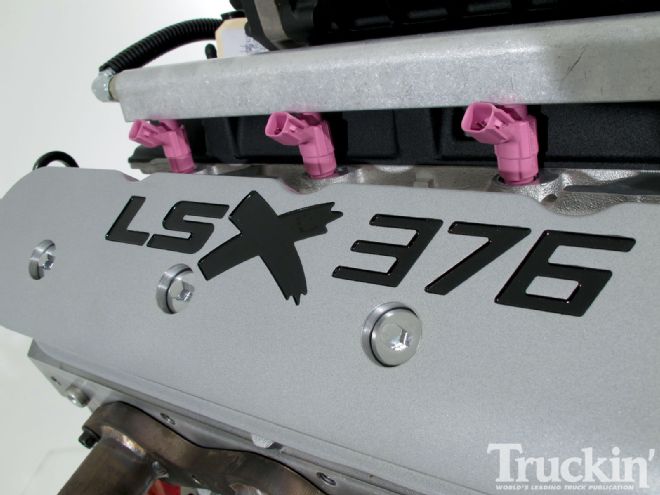When it came time to pull the worn-out, 150,000+ miles 4.8L V-8 out of the '04 GMC Sierra we nicknamed Project Novakane, we didn't want a little more power, we wanted monster power. Thankfully, making big power out of a relatively small engine is as easy as intelligently choosing the right combination of engine, power adder, drivetrain, and also understanding the limits to which you can push your combo. This part of the buildup was the most intense, most heavily researched, and most exciting, after all, the engine is the heart and soul of a performance truck.

| 2004 GMC Sierra Buildup factory Engine And Transmission
Before we could dream of burnouts and high-speed conquests, we first needed to remove the tired original 4.8L. To do this, we drove the Sierra into our Source Interlink Tech Center and got to work removing the necessary parts. Working on a '99+ GM truck is quite easy and pulling the engine, with the right tools and some help, isn't a difficult job. We started by removing the hood, then drained the coolant, and began the job of removing the serpentine belt, alternator, throttle body, and intake manifold. Each bolt that was removed was placed in a Ziploc bag and cataloged for easy reference when the new engine is installed. On the GM trucks, a cool trick is simply unbolting the A/C compressor and bracket, along with the power steering pump and bracket, and swinging them aside without disconnecting the hoses, which would require a costly flush and refill. With each sensor disconnected and wire labeled for reference, we removed the driveshaft, disconnected the manual transmission shifter, and unbolted the transmission and engine mounts, along with the front crossmember, and then bolted the engine leveler to the block. A couple of tugs with the engine hoist later, our 4.8L was out of the truck and our Sierra was ready for some real power!
Looking around the performance car world, one particular supercar stood out time and time again-the LS9-equipped Corvette ZR1. Combining a supercharger with the tried and true (albeit modified and reinforced) LS3 under the hood, the new engine helps the ZR1 outperform other cars costing twice as much. Backing the blown small-block is a heavy-duty Tremec six-speed that helps propel the 'Vette to incredible performance numbers. Knowing that the GM Performance engineers are some of the best in the world, we're going to use the ZR1 as inspiration for Project Novakane. Hunting around for an appropriate long-block, we came across GM Performance Parts newest member of the LSX family, the LSX376. We officially had our first "lightbulb" moment and knew this engine was going to power our 4,300-pound truck into warp speed for the long haul.

| We squeezed so much power out of our 150,000+ mile factory 4.8L, it finally gave up the fight. Rather than go through it and rebuild it, we opted to peruse the GM Performance Parts catalog and place an order. Before we could swap in the new combo, we first needed to pull the original LS-based small-block.
Starting with an economical LSX Bow Tie block, the GM Performance Parts engineers added high-flow LS3-style L92 heads and 9:1 low-compression forged-aluminum pistons for a boost-friendly, high-revving engine that packs a wallop in a 376ci small-block package. Using the stock LS3 fuel-injection manifold and throttle-body, the LSX376 creates 450 hp at 5,900 rpm and 444 lb-ft of torque at 4,600 rpm, however, with the low-compression pistons, boost is what this engine lives for. Designed for 6-8 psi of boost, the LSX376 can safely live around the 620 hp range and still deliver nearly 20 mpg on the highway. If boost is what the LSX376 wants, then boost is what we'll give it.
Searching high and low for a supercharger that would send our Sierra into the upper echelon of performance automobiles, our mission ended once we found the MagnaCharger MP2300 supercharger. The MP2300 uses the same technology found in the Corvette ZR1's supercharger, and combines a four-lobe rotor with high-twist 160-degree helix that has improved efficiency, is quieter than previous superchargers, and has cooler discharge temps. Combine those improvements with MagnaCharger's bypass valve system that reduces parasitic drag during normal driving so that no energy is wasted, along with an integral water-to-air intercooler, and the decision to go with the MP2300 was an easy one. It also helps that MagnaCharger is well-known throughout the industry as having world-class installation hardware and every kit comes complete with everything needed.
We hate the thought of having a performance truck with an automatic transmission and we wish that Chevy would have followed the original Silverado SS concept and put a stick shift in the production truck.
Just as Chevy used in the Corvette ZR1, we'll be using a Tremec T-56 six-speed manual transmission from Hurst Driveline Conversions in our Sierra. Going one step bigger than the traditional T56, we've opted for the big daddy from Tremec-the T56 Magnum. Capable of handling 700 lb-ft of torque, the Magnum uses upgraded internals for added strength and longevity and is designed to bolt right up to an LS engine bellhousing or scattershield. With two available gear ratios, we were able to mimic the ZR1's 2.97 First gear ratio and with double overdrives of .74 and .50 ratios, the T56 should put our LSX376 into mileage-friendly low cruising rpm. If you've ever shifted a T56, either in a 'Vette, Viper, Camaro, or Mustang, you know that our Novakane truck will be a real blast to drive and should be leaving two black tire streaks all over our test track.
Providing the engagement of our Tremec T56 Magnum will be a Street Dual II clutch from RAM. Designed for high-horsepower street performance where a stock pedal feel is desired, the Street Dual II clutch can hold up to 950 lb-ft of torque, is extremely quiet when engaging, and doesn't require excessive pedal effort like so many aftermarket clutches.
Add to the clutch RAM's new hydraulic release bearing and billet flywheel and our GMC will officially be snapping off ultra-quick launch times.
Whereas 620 flywheel horsepower sounds awesome, we're greedy and the desire to have more power kept itching away at us. If 6 psi is good, wouldn't 12 psi be better? Yes. The answer to more power is always yes. Don't miss next month, when we'll show you the exact components needed to take our LSX small-block into the supercar performance world.
In this story, we also included a quick engine removal tutorial for 4.8L and 5.3L LS-based engines. This isn't a step-by-step how-to article, but it will give you a good idea of what is needed to pull an engine and what you should expect when doing a transplant. Always refer to your repair manual when pulling an engine and don't forget to ask a few friends for help.
